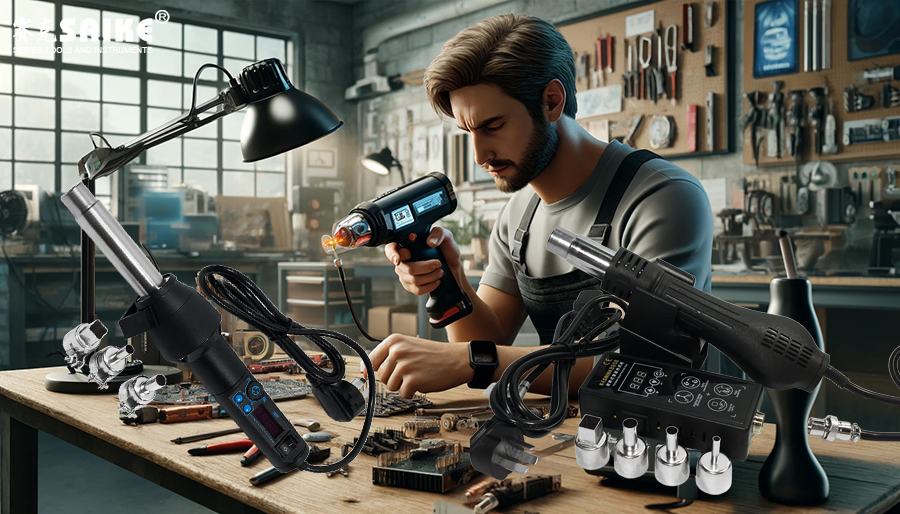
SK-YJ000RFQ-KP 100014
As an efficient and powerful tool, the heat gun finds extensive applications in various fields such as electronic repair, handicraft production, plastic welding, and more. To achieve the best work results, it is crucial to precisely set the temperature and air speed of the heat gun. The following will detail how to accurately set the temperature and air speed of a heat gun.
I. Understanding the Basic Structure and Working Principle of a Heat Gun
Before setting the temperature and air speed, we first need to understand the basic structure and working principle of the heat gun. It mainly consists of heating elements, fans, and control circuits. The heating elements generate heat, the fans blow out hot air, and the control circuits regulate the temperature and air speed.
II. Precise Temperature Setting Method
1.Determine the Required Temperature Range:
– Depending on different work tasks and materials, determine the required temperature range. For example, lower temperatures (such as 120-150℃) are generally used for heat-shrink tubing, while higher temperatures (such as 200-400℃) may be required for tasks like soldering or thawing frozen pipes.
2.Preheat and Calibrate the Temperature:
– Before starting work, turn on the heat gun for preheating to ensure stable temperature.
– Use a thermometer or infrared thermometer to calibrate the temperature of the heat gun to ensure that the actual temperature matches the set temperature.
3.Fine-Tune the Temperature Setting:
– Adjust the temperature setting through the temperature adjustment knob or digital control panel on the heat gun based on actual needs. Some advanced heat guns also allow users to perform more precise temperature control via software or Bluetooth.
4.Monitor and Adjust:
– Continuously monitor the temperature during work and make adjustments as needed. If the temperature is too high or too low, adjust the temperature setting immediately to avoid damaging the material or affecting the work results.
III. Precise Air Speed Setting Method
1.Determine the Required Air Speed:
– The air speed setting usually depends on the work type and material thickness. Higher air speeds can be chosen for thinner materials or situations requiring rapid heating, while lower air speeds should be selected for thicker materials or slow heating scenarios.
2.Adjust the Air Speed:
– Use the air speed adjustment knob or digital control panel on the heat gun to adjust the air speed. Ensure the air speed is set within the required range.
3.Observe the Effect and Adjust:
– After adjusting the air speed, observe the work effect. If uneven heating or slow heating speed is noticed, appropriately adjust the air speed for better results.
IV. Precautions
– When setting the temperature and air speed, refer to the material manufacturer’s recommendations or relevant industry standards to avoid unnecessary damage to the material.
– Regularly check the temperature and air speed settings of the heat gun during use to ensure they remain within the required range.
– After use, turn off the heat gun and disconnect the power supply promptly to extend the equipment’s lifespan and ensure safety.
V. Summary
In summary, precisely setting the temperature and air speed of a heat gun is crucial for achieving the best work results. By understanding the heat gun’s working principle, determining the required temperature and air speed ranges, and making appropriate adjustments and monitoring, we can better utilize this powerful tool to complete various work tasks.


